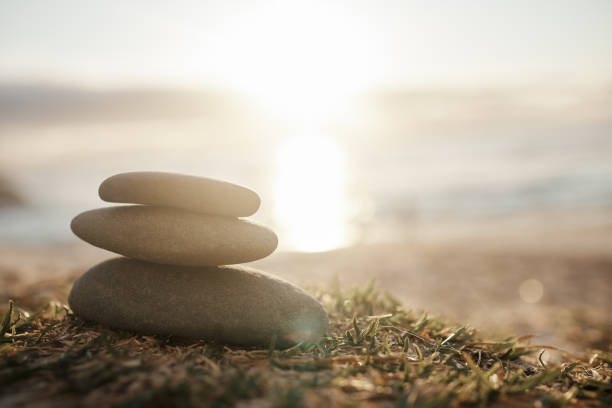Life is busy
From school to sports to work, it often feels like we need more hours in the day! Also, with many life changes ahead, it can be easy to fall into negative thought patterns, including excessively worrying about the future or overthinking the past. If you find it difficult to catch your breath amidst the chaos, but want to feel calmer and less overwhelmed, practicing mindfulness is a great place to start.
Understanding mindfulness
Mindfulness means being mentally present in the moment. Given the simple definition, it seems like mindfulness should be an easy task, but for many of us it’s incredibly difficult. We can all probably think of a time when we should’ve been enjoying ourselves, hanging out with friends or spending time with family, but then we start worrying about something, like a grade we got or an issue at work, and we spiral out. Not only can our “wandering mind” ruin a fun time, but it can also cause our mental health to take a nosedive.
Fortunately, there are many mindfulness exercises that you can incorporate into your daily life to help you get better at bringing your mind back to the present moment. They just take practice.
Benefits of mindfulness
By reducing stress and increasing well-being, mindfulness can help with your mood, focus, and sleep. It can also help you manage certain mental health conditions, like depression and anxiety. Mindfulness can even help improve high blood pressure and diabetes.
The list is long for reasons to be more mindful. So, how can you become more mindful?
Mindfulness exercises
You can use various mindfulness exercises. We have included some of the most common ones below. Remember, though, that mindfulness is not a one-and-done deal. It is something you need to work on regularly – maybe even daily – throughout your life.
Breathing Meditation
Meditation is one of the best tools you can use to be more mindful. There are many different types of meditation practices. Breathing meditation helps you practice staying focused on the present using your breath. To get started, find a quiet place, and get comfortable. For many of us, this includes sitting upright or lying down. Next, close your eyes, and focus on your breath. If your mind wanders, bring your thoughts back to your breath. If your mind keeps wandering, remember that this is normal. Try not to get frustrated with yourself. Your brain is like a muscle. To learn how to stay in the present, you need to train your brain over and over again to stay focused. Overtime, being present gets easier.
Externally focused meditation
You may find meditating easier if you focus on an external object (an object outside of yourself) instead of your breath. The first step is finding a comfortable position and quiet place, but instead of closing your eyes, you will decide what object you want to focus on. This could be anything around you, such as a spot on the wall, a leaf, a blade of grass, a painting, or anything else. Next, bring your full attention to your object. When you find yourself distracted by any noises, sensations on your skin, other things in your vision, or different thoughts, simply draw your attention back to your object. Throughout your meditation, you will likely have to refocus your attention on the object repeatedly. This is normal. It’s a part of training your brain to focus.
To learn about other types of meditations to try out, check out this link.
Yoga
If you want to practice mindfulness but meditation isn’t for you, yoga is a great option! Many aspects of mindfulness can be found in the practice of yoga. For example, one type of yoga practice, called vinyasa, focuses on blending pranayama (breath) with certain asanas (poses). Yoga is a mind and body practice that encourages you to be in the present moment physically through poses and mentally through breathing exercises or techniques. Many yoga instructors also help students set an intention, or mental focus, for a class, using a mantra – a word or phrase you repeat in your head.
How often should I practice mindfulness exercises?
Initially, it is important to start small (like 5 minutes) and slowly increase the time as you become more experienced and comfortable.
Meditation, yoga, and other mindfulness exercises don’t have to be a daily practice if that doesn’t work for you. They can be used during times of increased stress to calm your nerves and make you feel more present. However, practicing them more regularly is ideal for training your brain to be more present.
Mindfulness in everyday life
Mindfulness can also be practiced while you are doing everyday tasks. You can practice being present by paying attention to your environment using all of your senses – sound, smell, taste, sight, and touch. For example, when eating dinner, take time to smell, taste, and truly enjoy your food. Or when you are out on a walk, observe the trees moving, feel the wind on your face and your feet on the ground, smell the flowers, and hear the sounds of birds chirping. If you feel your attention drift, just refocus on your senses. Each time you refocus your attention on your senses, you train your brain to be present. Over time, you can change your brain!
The takeaway
With the chaos of our daily lives, it is easy to get frazzled and sucked up in a storm of negative thought patterns. But we can change how our brain works and learn to be more present by regularly practicing mindfulness exercises that work for us. When the going gets tough, having mental strength pays off. But, like strengthening our biceps, mindfulness takes practice.
For more information on this topic, check out these links:
Author: Summer Wildbill is a member of the Confederated Tribes of the Umatilla based in Pendleton, OR. She is a rising high school senior who dreams of being a journalist.


